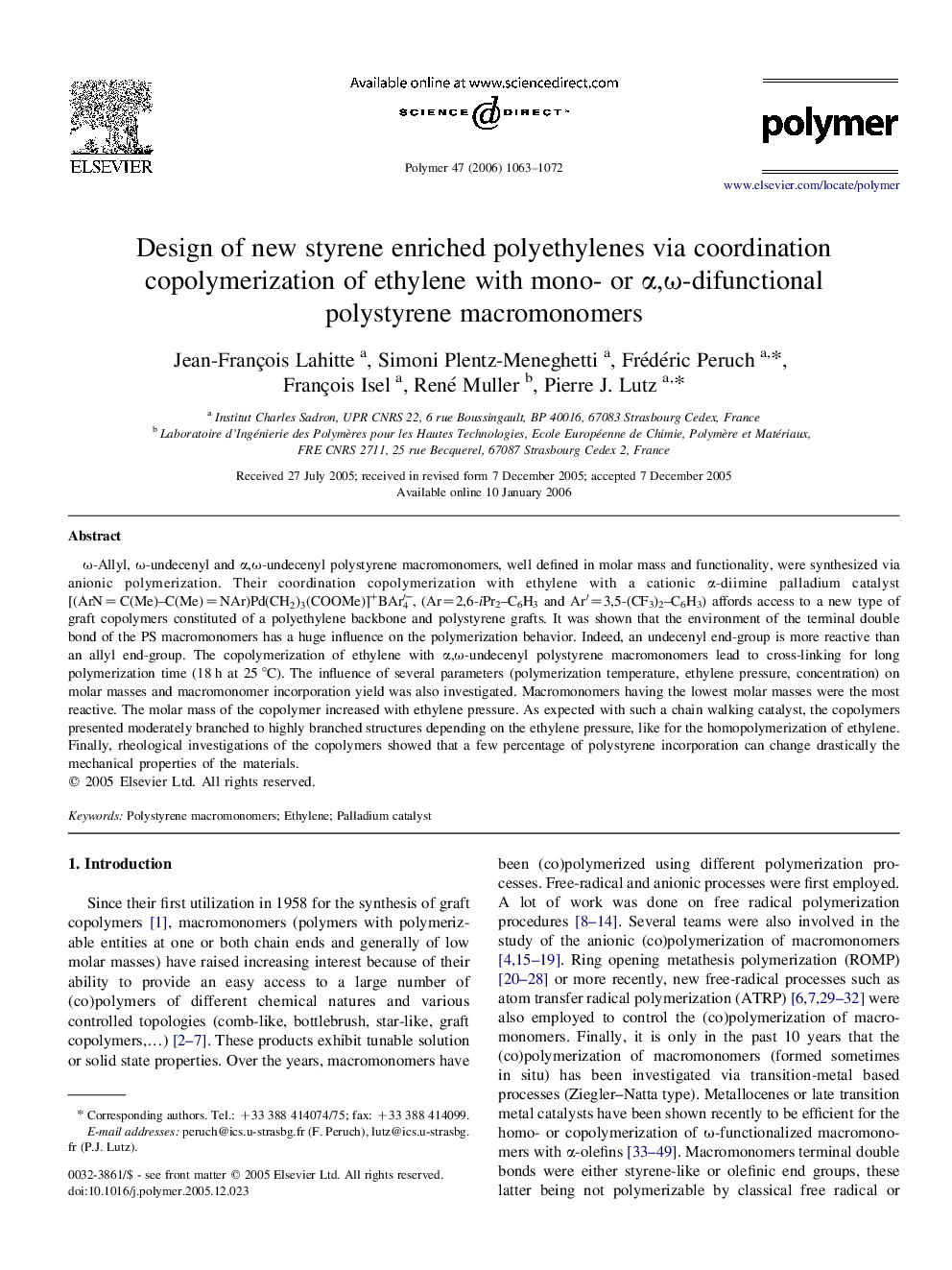| Article ID | Journal | Published Year | Pages | File Type |
|---|---|---|---|---|
| 5186499 | Polymer | 2006 | 10 Pages |
Abstract
Ï-Allyl, Ï-undecenyl and α,Ï-undecenyl polystyrene macromonomers, well defined in molar mass and functionality, were synthesized via anionic polymerization. Their coordination copolymerization with ethylene with a cationic α-diimine palladium catalyst [(ArN=C(Me)-C(Me)=NAr)Pd(CH2)3(COOMe)]+BAr4â²â, (Ar=2,6-iPr2-C6H3 and Arâ²=3,5-(CF3)2-C6H3) affords access to a new type of graft copolymers constituted of a polyethylene backbone and polystyrene grafts. It was shown that the environment of the terminal double bond of the PS macromonomers has a huge influence on the polymerization behavior. Indeed, an undecenyl end-group is more reactive than an allyl end-group. The copolymerization of ethylene with α,Ï-undecenyl polystyrene macromonomers lead to cross-linking for long polymerization time (18 h at 25 °C). The influence of several parameters (polymerization temperature, ethylene pressure, concentration) on molar masses and macromonomer incorporation yield was also investigated. Macromonomers having the lowest molar masses were the most reactive. The molar mass of the copolymer increased with ethylene pressure. As expected with such a chain walking catalyst, the copolymers presented moderately branched to highly branched structures depending on the ethylene pressure, like for the homopolymerization of ethylene. Finally, rheological investigations of the copolymers showed that a few percentage of polystyrene incorporation can change drastically the mechanical properties of the materials.
Keywords
Related Topics
Physical Sciences and Engineering
Chemistry
Organic Chemistry
Authors
Jean-François Lahitte, Simoni Plentz-Meneghetti, Frédéric Peruch, François Isel, René Muller, Pierre J. Lutz,
